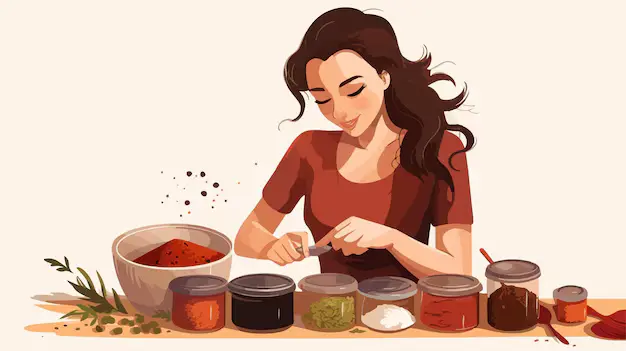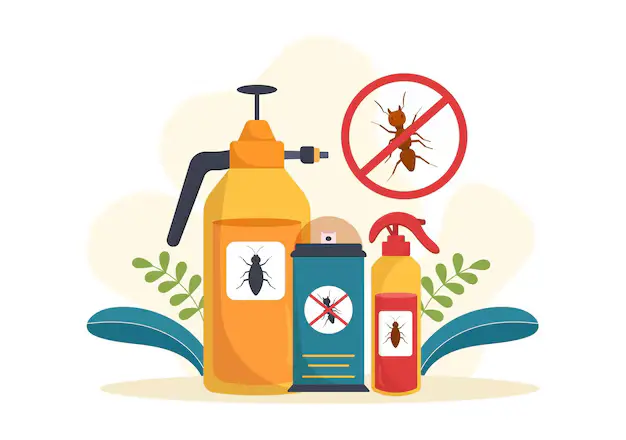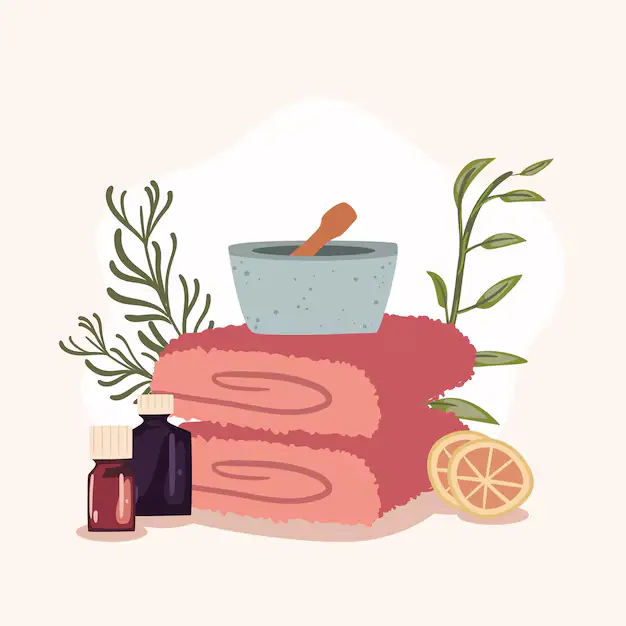Introduction
A clean home is a happy home, where comfort and peace thrive, and an eco-friendly home keeps that happiness sustainable, protecting your family, pets, and loved ones. Living sustainably begins at home, and one of the simplest ways to make a positive impact is by adopting eco-friendly DIY house cleaning remedies. These natural solutions allow you to reduce the use of harsh chemicals, lower your household costs, all while keeping your home clean, fresh, and safe for your family. Unlike conventional cleaning products, many of which contain toxic ingredients, DIY remedies has ingredients such as vinegar, baking soda, lemon, or essential oils.
Eco-friendly DIY remedies are not only safer for your family but are also cost-effective. They tackle common household problems from stubborn stains and greasy surfaces to lingering odors, without exposing your home to unnecessary chemicals. By integrating these natural alternatives into your cleaning routine, you can maintain a spotless home.
Aa working in the cleaning industry for years, we believe that a greener home is achievable by replacing conventional cleaning products with eco-friendly DIY remedies. Using natural ingredients like vinegar, baking soda, citrus, and essential oils, you can clean, deodorize, and disinfect your living spaces effectively. These remedies are safe, budget-friendly, and reduce your household’s environmental impact, helping you create a healthier home and a more sustainable lifestyle.
In this blog, we will explore the best eco-friendly DIY home remedies that can help you make your living space cleaner, fresher, and more sustainable.
Why to Choose Eco-Friendly DIY Home Remedies?

According to Statistics Canada, Canadian households are becoming more conscious of the environment. In 2021, 97% of households reported recycling and using reusable shopping bags, and more than half actively reduced energy consumption. But what about inside our homes—our kitchens, bathrooms, and bedrooms? Choosing eco-friendly DIY remedies is not more an option. It’s a necessity of an hour. Following are the benefits we have by choosing eco-friendly DIY remedies:
Eco-Friendly Cleaning Protects the Environment
Most store-bought cleaning products are loaded with chemicals that pollute indoor air and contaminate water once rinsed down the drain. By switching to DIY cleaning remedies, you reduce your household’s chemical footprint with simple, natural ingredients like vinegar, lemon, and baking soda. As these are biodegradable and safe for the environment, protecting both your home and aquatic ecosystems.
A Safer Home for Kids and Pets
The harsh chemicals in traditional cleaners can trigger allergies, breathing issues, skin irritation, and even hormonal disruptions. Know more about the health effects of chemicals. On the other hand, DIY cleaning solutions avoid these hazards by using safe, everyday ingredients, keeping your family and furry friends healthier in the long run.
Budget-Friendly Solutions
Homemade cleaning remedies are surprisingly affordable. Ingredients like baking soda and vinegar cost low, can be bought in bulk, and last for months. You can store them in reusable containers, this not only save money but also reduce plastic waste.
Healthier Indoor Air Quality
Many store-bought cleaners contain volatile organic compounds (VOCs) that negatively impact indoor air quality, causing irritation to your eyes, skin, and lungs. Eco-friendly DIY remedies keep the air in your home fresh, clean, and chemical-free, supporting a healthier space for everyone.
Reduces Plastic Waste
Commercial cleaners often come in plastic-heavy bottles that pile up in recycling bins. By making your own remedies and storing them in reusable glass spray bottles or jars, you reduce plastic waste. Over time, this small habit creates a big environmental difference.
Customizable for Your Needs
DIY cleaners let you decide what goes in. Add lavender or citrus essential oils for a refreshing scent, or mix in castile soap for extra strength against bathroom grime. These flexible solutions give you the power to tailor your cleaning routine exactly to your needs.
Choosing eco-friendly DIY home remedies is about creating a cleaner, greener future for everyone.
Must-Have Eco-Friendly Ingredients
Before you start up your eco-friendly DIY home remedies, it’s important to have the right ingredients. These are basic but effective products. Also, they are affordable, non-toxic, and highly versatile. With these in your cupboard, you’ll be ready to handle almost any cleaning task naturally.
1. White Vinegar—–The All-Rounder Disinfectant
White vinegar is a must-have for natural cleaning. It works as a disinfectant, deodorizer, and streak-free glass cleaner. Perfect for kitchens and bathrooms, it cuts through grime while keeping your home chemical-free.
Common Uses:
- Multipurpose surface cleaner
- Glass and mirror shine
- Kettle and coffee maker descaler
Note: Do not use vinegar on natural stone surfaces such as granite or marble—it may cause etching.
2. Baking Soda—The Gentle Scrubber
Baking soda is your go-to for scrubbing and deodorizing. It’s mildly abrasive, so it lifts dirt without scratching surfaces, and it naturally absorbs odors.
Common Uses:
- Scouring sinks, stovetops, and bathtubs
- Deodorizing carpets and refrigerators
- Unclogging drains when paired with vinegar
Tip: Store baking soda in a dry, airtight container to keep it from clumping.
3. Lemon—The Natural Degreaser
Lemons are rich in citric acid, a natural degreaser and antibacterial agent. The acidity helps break down limescale and mineral deposits while leaving behind a fresh scent.
Common Uses:
- Cleaning cutting boards and countertops
- Polishing metal taps and fixtures
- Deodorizing the microwave or garbage disposal
- Helpful in garage floor cleaning
Bonus: Mix lemon juice with baking soda for a fizzy, fun, and powerful cleaner.
4. Castile Soap—The Plant-Based Power Cleaner
Castile soap is made from vegetable oils (like olive oil), Castile soap is biodegradable and safe for the whole family. Just a little goes a long way.
Common Uses:
- All-purpose spray cleaners
- Floor and dish soap alternatives
- Gentle laundry detergent
Bonus Tip: Dilute well—a few drops with water are enough to avoid residue.
5. Essential Oils (Tea Tree, Lavender)—Nature’s Fragrance Boost
Essential oils do more than just smell good. Tea tree oil is antifungal and antibacterial, while lavender and lemon oils bring calming and refreshing vibes to your DIY cleaners.
Common Uses:
- Natural air fresheners
- Disinfectant sprays
- Mould prevention and deodorizing
Caution: Always dilute it properly, and store in dark glass bottles to preserve potency.
6. Hydrogen Peroxide—A Safer Bleach Alternative
This eco-friendly disinfectant (3% solution) whitens, sanitizes, and deodorizes without leaving harmful residue—it simply breaks down into water and oxygen.
Common Uses:
- Sanitizing toothbrushes and cutting boards
- Whitening/ cleaning tile grout and fabrics
- Disinfecting surfaces and handles
Safety Tip: Keep hydrogen peroxide in its original brown bottle and away from light to maintain its effectiveness.
7. Olive Oil—The Natural Polish for Wood and Metal
Olive oil isn’t just for cooking. It’s also an excellent ingredient for polishing and protecting various surfaces. It nourishes wood and adds shine without harsh chemicals.
Common Uses:
- Conditioning wooden furniture and cutting boards
- Polishing stainless steel appliances
- Removing sticky residue
Pro Tip: Mix with vinegar or lemon juice for a natural, fragrant furniture polish.
With just these seven eco-friendly staples, you can create dozens of DIY remedies that replace harsh, chemical-heavy cleaners. They’re safe, affordable, and powerful enough to keep your home fresh
Your DIY Cleaning Remedies for Every Room

Transforming your home into a greener, healthier space doesn’t require complicated recipes or expensive tools. By switching to eco-friendly DIY alternatives, you can keep your home clean, fresh, and safe for your family. Each room in your house comes with its own cleaning challenges, but the right homemade mixtures can tackle grease, grime, and odors effectively. Let’s look at simple eco-friendly remedies you can make at home that will work for your kitchen, bathroom, bedroom, and living room.
Kitchen Cleaning Remedies
From grease splatters, stubborn odors, to sticky sinks your kitchen bear it all. These natural remedies will help you keep it fresh and sparkling.
1. Grease-Cutting Citrus Spray
Ingredients:
- 2 cups white vinegar
- Peels from 2–3 lemons or oranges
- 1 cup water
Instructions:
Soak the citrus peels in vinegar for one week, strain the liquid, then mix with water in a spray bottle. Use it on countertops, stovetops, and even cabinet doors.
Why it works: Vinegar cuts through grease and disinfects surfaces, while citrus oils break down stubborn residues and leave a refreshing scent.
Pro Tip: If you have white kitchen cabinets with black countertops, this spray is a lifesaver—it removes grease without leaving streaks behind.
2. Baking Soda Sink Scrub
Ingredients:
- ½ cup baking soda
- 10 drops lemon essential oil
Instructions:
Sprinkle the mix directly into the sink and scrub with a damp sponge. This removes buildup and odours effectively without damaging your stainless steel.
Why it works: Baking soda’s gentle abrasiveness removes stains, stuck-on food, and odors without scratching stainless steel. The lemon oil adds a fresh, clean fragrance.
Smart Hack: If you’re short on time, pair this with fast and easy kitchen cleaning hacks like lining surfaces or doing a nightly reset—it’ll keep your kitchen shining with less effort.
Bathroom Cleaning Remedies
Bathrooms are often the trickiest rooms to clean because of moisture, soap scum, and mold. Luckily, natural remedies can fight these problems effectively without choking fumes.
3. No-Fume Toilet Cleaner
Ingredients:
- 1 cup baking soda
- ½ cup white vinegar
Instructions:
Pour the baking soda into the toilet bowl, followed by vinegar. Let the fizzy reaction work for 10 minutes, then scrub and flush.
Why it works: The fizzing action naturally breaks down stains and deodorizes without the need for bleach or harsh toilet gels.
Bonus Tip: Ideal for households with children or pets where avoiding toxic cleaners is a priority.
4. Anti-Mould Spray
Ingredients:
- 1 part white vinegar
- 1 part water
- 10 drops tea tree oil
Instructions:
Spray this mixture on tiles and walls. Tea tree oil is a natural antifungal that helps prevent mildew growth in damp areas.
Why it works: Tea tree oil is a powerful natural antifungal, while vinegar prevents mildew buildup. Together, they stop mold before it spreads.
Bonus Tip: For a sparkling space that smells fresh too, try quick and easy tips for bathroom shining. Pair this spray with quick bathroom shining hacks like wiping mirrors with vinegar and newspaper while boosting your bathroom’s fragrance.
Bedroom and Living Room Remedies
Your bedroom and living room are your comfort zones. They deserve to feel cozy and fresh, without being bogged down by dust, stale odors, or clutter. These remedies make upkeep simple.
5. Natural Fabric Freshener
Ingredients:
- 1 cup distilled water
- 1 tbsp baking soda
- 15 drops lavender oil
Instructions:
Combine in a spray bottle and shake well. Mist over upholstery and linens to refresh without synthetic perfumes.
Why it works: Baking soda neutralizes odors, while lavender oil adds a soothing scent that helps create a calming environment.
Smart Move: Use a detailed bedroom to-do list to stay organized and make cleaning feel effortless.
6. DIY Dusting Polish
Ingredients:
- ¼ cup olive oil
- ¼ cup vinegar
- 10 drops lemon essential oil
Instructions:
Mix and apply with a microfiber cloth to wooden furniture, shelves, and decorative pieces. Buff gently for shine.
Why it works: Olive oil nourishes wood, vinegar removes residue, and lemon adds a fresh scent—leaving furniture polished and dust-free.
Fresh Tip: From kitchen to bedroom, a solid house cleaning checklist keeps everything fresh and organized.
By customizing your cleaning solutions for each room, you’ll not only reduce exposure to harmful chemicals but also saving money and creating a healthier home environment. With these DIY remedies, you’ll spend less time scrubbing and more time enjoying your space.
Green Pest Control DIY Remedies for Your Home
No one likes pests sneaking into their home, but most commercial sprays and traps are loaded with harmful chemicals that can affect indoor air quality and pose risks to kids and pets. Fortunately, you can create natural, non-toxic remedies that are just as effective at keeping bugs away, without compromising your family’s health.

7. Ant Repellent
Ingredients:
- 1 part vinegar
- 1 part water
- 10 drops peppermint oil
Instructions:
Mix in a spray bottle and apply along baseboards, window sills, and any visible entry points where ants are commonly seen.
Why it works: Ants leave scent trails for others to follow. Vinegar disrupts those trails, while peppermint oil’s strong scent repels ants naturally.
Best Tip: This is a safe option for homes with kids and pets, unlike chemical sprays that linger in the air. Plus, peppermint adds a refreshing smell to your home while driving ants away.
8. Fruit Fly Trap
Ingredients:
- A small jar
- 2 tbsp apple cider vinegar
- A drop of dish soap
- Plastic wrap with holes
Instructions:
Pour vinegar and dish soap into the jar, cover it with plastic wrap, and poke tiny holes on top. Flies are drawn to the vinegar scent, slip inside, and get trapped.
Why it works: Apple cider vinegar mimics the scent of fermenting fruit, which attracts flies, while the dish soap breaks surface tension so they can’t escape.
Smart Hack: Place this trap near your fruit basket or compost bin to cut down fruit flies before they spread. It’s quick, effective, and costs almost nothing.
Natural Air Freshening DIY Remedies
Air fresheners sold in stores may smell pleasant, but many contain hidden chemicals that can cause headaches, allergies, and even respiratory irritation. Instead, try these natural deodorizing and freshening ideas that bring genuine freshness into your home.
9. Coffee Ground Deodorizer
Used coffee grounds aren’t just waste—they’re powerful natural deodorizers.
How to use: Place dried coffee grounds in an open bowl or container and keep them in your fridge, pantry, shoe rack, or even under the sink. Replace them weekly for best results.
Why it works: Coffee grounds absorb and neutralize bad odors instead of just masking them.
Bonus Tip: If you want a variety of DIY air fresheners (especially for bathrooms), you can explore natural blends using baking soda, essential oils, or even homemade gel air fresheners.
10. Simmer Pot for Home Fragrance
Ingredients:
- Orange peels
- Cinnamon sticks
- Cloves
- Water
Instructions:
Add all ingredients to a pot, cover with water, and let it simmer on low heat. The fragrance fills your home with a cozy, warm scent—perfect for the colder months.
Why it works: Natural spices and citrus release oils into the steam, spreading a clean, inviting aroma that feels homely and festive.
Smart Hack: Swap ingredients seasonally—try lemon and rosemary in summer, or apple slices with nutmeg in autumn.
Eco-Friendly Laundry Boosters
Laundry products are another hidden source of chemicals. Fabric softeners, detergents, and stain removers often contain artificial fragrances and irritants. Instead, try these eco-friendly boosters to keep your clothes soft, fresh, and stain-free.
11. DIY Fabric Softener
Ingredients:
- 2 cups white vinegar
- 20 drops essential oil (e.g., lavender or eucalyptus)
Instructions:
Add ½ cup of this mixture directly into the rinse cycle of your laundry.
Why it works: Vinegar naturally softens fabrics, reduces static, and eliminates detergent buildup. Essential oils add a clean, soothing fragrance without synthetic chemicals.
Pro-Tip: If anyone in the family have sensitive skin, you can use it undoubtedly. This is a gentle and hypoallergenic alternative to store-bought softeners.
12. Stain Remover Paste
Ingredients:
- 2 tbsp hydrogen peroxide
- 2 tbsp baking soda
- A drop of castile soap
Instructions:
Mix into a paste and apply directly to stains such as wine, grass, coffee, or food spills. Let it sit for 10–15 minutes, scrub lightly, and wash as usual.
Why it works: Hydrogen peroxide lifts organic stains, baking soda absorbs odors, and castile soap helps break down oils and residues.
Pro Tip: Always test on a small, hidden area first, especially for dark fabrics.
By using these DIY remedies, you not only keep your home safe and chemical-free but also cut costs and reduce waste. For busy households, these solutions are simple, quick, and effective.
Quick Fix: If you’d like to take things a step further, consider hiring professionals for eco-friendly cleaning, who use sustainable practices. It’s an easy way to ensure your home stays greener, fresher, and healthier without the extra workload.
Storage and Safety Tips for DIY Remedies
Making your own DIY cleaners is simple and effective—but storing and handling them correctly is just as important. Proper storage ensures your remedies stay potent, safe, and ready to use whenever you need them. Here’s how you can keep your eco-friendly cleaners fresh and family-friendly:
1. Choose the Right Containers
Always store your DIY remedies in glass spray bottles, preferably amber or cobalt-colored ones. Unlike plastic, glass won’t react with acidic ingredients like vinegar or break down with essential oils. Dark-colored glass also protects light-sensitive ingredients (like hydrogen peroxide or essential oils) from losing their effectiveness over time.
Pro Tip: Invest in a few durable glass bottles that you can reuse—this also helps cut down on plastic waste.
2. Label Everything Clearly
Each container should have a label with the remedy’s name, ingredients, and the date it was made. This simple habit saves you from mixing up solutions, ensures you use them before they lose potency, and helps if someone in your family has allergies or sensitivities.
Hack: No more guessing what’s inside, just clear labeling makes cleaning safer and more organized.
3. Keep Out of Reach of Children and Pets
Even though DIY cleaners are safer than commercial ones, they can still cause irritation if swallowed or splashed in the eyes. Store them in secure cabinets or high shelves to prevent accidents.
Smart Hack: If you use essential oils, remember some (like tea tree oil) can be toxic to pets when ingested—so safe storage is a must.
4. Always Do a Spot Test First
Before using your homemade remedy on large areas, test it on a small, hidden spot—especially with delicate surfaces like natural stone, untreated wood, or fabric. This prevents unwanted staining or damage and gives you confidence in using the solution.
5. Avoid Cross-Contamination
Use separate containers and tools for different cleaners. For example, don’t reuse a vinegar spray bottle for a hydrogen peroxide mixture without cleaning it thoroughly first. This prevents unexpected chemical reactions and ensures each remedy works as intended.
6. Store in Cool, Dry Places
Heat and sunlight can degrade natural ingredients, especially essential oils and hydrogen peroxide. Always keep your DIY cleaners in a shaded, dry spot—such as a pantry shelf or closed cupboard—to extend their shelf life.
We suggest you to follow these simple storage and safety tips. This will not only preserve the effectiveness of your DIY cleaners but also keep your household safe and organized. With the right care, your homemade remedies can last longer, work better, and give you peace of mind while you clean.
Final Thoughts: Embrace a Greener Lifestyle
Let your home reflect your values. These eco-friendly DIY home remedies will take the next step toward greener living. From citrus-based cleaners to natural deodorizers and pest control hacks, these remedies prove that green living doesn’t have to be complicated or costly.
Every bottle you reuse, every chemical you skip, and every plastic container you avoid makes a difference. By taking small steps with the tips above, you will make your home a cleaner, greener and happy place to breathe and live in. Short on time with your green cleaning? Let Mesh Maids, professional cleaning services, deliver a deep, eco-safe clean for you and your home. Contact us and book your appointment with us.
FAQs regarding DIY Home Remedies for a Greener Home
Are these DIY remedies safe for all surfaces?
Most are safe for general use, but always test on a small spot first, especially on stone, leather, or untreated wood.
Can I use essential oils in all recipes?
Yes, but use sparingly. Some oils can stain or irritate sensitive skin. Always choose high-quality, pure essential oils.
How long do these DIY cleaners last?
Most vinegar- and baking soda-based solutions last 1–2 months when stored in a cool, dry place.
What’s the most eco-friendly container to use?
You can use glass spray bottles, which are ideal. They’re reusable, recyclable, and don’t leach chemicals.
